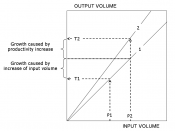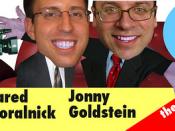Briefing Paper on endogenous growth theory in connection of forth-coming meeting with CBI and a Treasury team.
Prepared for: Mrs Smith (The Boss)Date:31 Oct 2003
Prepared by: Ann Smith
Endogenous growth theory is an extension from one basic neoclassical growth model, which was first formalised by Robert Solow in 1950's. There are a number of basic assumptions underlying the neoclassical growth model.
The first one is that the productive capacity of the economy can be adequately characterised by a constant return to scale production function with diminishing returns to capital and labour. The second assumption is that firms are price takers in a competitive market place. In other words, no individual firms are assumed to hold no market power. The last assumption is that technological change is entirely exogenous, it is independent of the actions of the consumers and producers and it is available to all countries at no cost.
There are few implications of the neoclassical model of growth. The first major problem is that sustained increases in per capita income can be supported only by sustained increases in total factor productivity. In Solow's model, output per worker can rise only if the ratio of capital per worker increases or total factor productivity increases. Since this model assumes diminishing returns to capital, there is a limit to how much capital accumulation can add to output per capita. Thus, the only way to increase output per worker in the long run is to have sustained productivity growth. This is a major weakness of the neoclassical growth model, since long-run growth is exogenous, it can be determined by an element that is entirely outside of the model.
A key feature of the endogenous growth theory, which was formed by Paul Romer and Robert Lucas in the late 1980's,


